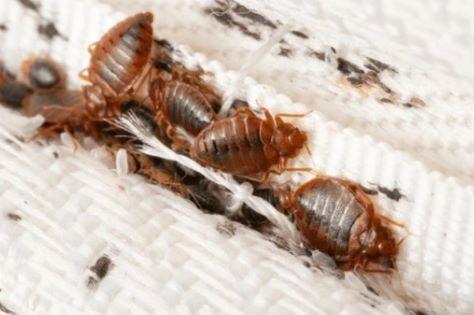Bedbug advice
About Bedbugs
Bedbugs are oval shaped, flat, reddish brown and can grow up to 6mm in length.

Bedbugs are nocturnal parasites which prefer to feed off of the blood of humans but will also feed on dogs, cats and other mammals if there are no humans available. The first indication of an infestation is likely to be the presence of bites which can cause skin irritation and red marks, as well as small specks of blood on the host and/or bedding. Other indications of an infestation are moulted skin casings and small black spots where the bedbug has defecated. In heavy infestations there can also be an odour similar to rotting raspberries.
Bedbugs are not known to be significant in the spread of disease to people, including blood-borne diseases. In some cases bites can cause severe allergic reactions in a some people. Medical advice should be sought in such circumstances. For more information Visit the NHS website.
Finding Bedbugs
Bedbugs will live close to their source of food, whilst they do not create nests they will usually live in the same hiding places such as crevices in beds, furniture, skirting boards etc and emerge every few days to feed. Bedbugs can however survive without feeding for up to 5 months and an increased use of second hand furniture is thought to be a contributory factor in their spread.
It typically takes a bedbug 5-10mins to complete its feeding on a host before retreating back to its hiding place, only emerging to feed again in a few days.
Nearly eradicated in developed countries, including Britain, since the 1980s there has been a rapid increase in their numbers believed to be due in part to an increase in international travel between developed and developing nations.
How do I treat bedbugs?
Bedbug infestations can be very difficult to treat due to their ability to hide in inaccessible locations and emerge after treatment to re-infest an area. It is therefore recommended that you employ a professional pest contractor to treat an infestation.
If you wish to attempt a DIY treatment then the key is to be thorough and always follow the label instructions.
Treat the infested room thoroughly and where possible appropriately dispose of your bedding and mattress, alternatively wash and tumble dry your bedding and steam clean your mattress. Some treatments may require you to vacate the treated area for a time.

